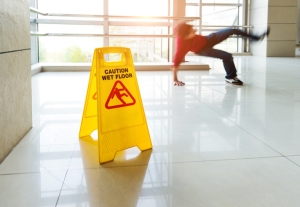Preventing Third-party Slip, Trip and Fall Claims
Posted September 14, 2023

Employers have a legal responsibility to correct, fix or keep their business free from recognized hazards that could cause injury, known as premise liability. Businesses can protect themselves against premise liability claims by maintaining their property to prevent unsafe conditions from arising. That’s why it’s important for employers to take steps to prevent physical property hazards whenever possible. However, employers should understand that premise liability is different from general liability; premise liability claims can occur when the physical condition of a business owner’s property causes a customer’s or nonemployee’s injury, whereas commercial general liability claims are filed when property damage or bodily harm of third-party results from a business’s products, services or operations. Slips, trips and falls of a third-party at a business would fall under premise liability and not a general liability.
Download the Guide to Preventing Third-party Slip, Trip and Fall Claims which provides an overview of the steps a business should take to reduce their risk of premise liability claims.
